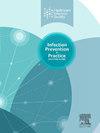Pharmacist-led antimicrobial stewardship program in the treatment of Staphylococcus aureus bacteraemia in paediatric patients: a multivariate analysis
IF 1.9
Q3 INFECTIOUS DISEASES
引用次数: 0
Abstract
Background
Care bundles are a recognised strategy to improve treatment. When managed through an Antimicrobial Stewardship Program (ASP) based on the pharmacist-led program model, care bundles can be an effective tool to guide decision making in clinical practice and to improve patient outcomes. This study aimed to evaluate the results of a pharmacist-led ASP which included a care bundle based on clinical outcomes of Staphylococcus aureus bacteraemia (SAB) in a paediatric hospital.
Methods
A retrospective cohort study with multivariate analysis was conducted in a paediatric hospital in Brazil. The study comprised 120 paediatric patients with a positive blood culture for S. aureus with occurred between 2014 and 2021 and clinical and laboratory results consistent with infection. The study was classified into two periods: pre-intervention (n=44) and intervention (n=76). A pharmacist-led ASP program with a care bundle was established during the intervention period 2017–2021. The primary outcome assessed was the impact on clinical outcomes, including infection-related mortality and 90-day reinfection rate, both being considered therapeutic failure.
Results
The multivariate analysis demonstrated that the following variables had an impact on primary outcome: infant patients [Odds ratio (OR) 12.998, P=0.044]; use of more than three antimicrobial treatment regimens [OR 0.006, P=0.017]; intervention period [OR 0.060, P=0.034]; bundle item 1 – follow-up blood culture [OR 18.953, P=0.049]; bundle item 2 – early source control [OR 0.002, P=0.018]; bundle item 4 – de-escalation to oxacillin for methicillin-sensitive S. aureus [OR 0.041, P=0.046].
Conclusions
The pharmacist-led ASP model showed an increase in adherence to the care bundle between the two study periods, with reduced probability of a negative outcome. Furthermore, risk factors for S. aureus bacteraemia were identified that may inform management and contribute to better patient outcomes in the paediatric population.
药剂师主导的抗菌药物管理计划在治疗儿科患者金黄色葡萄球菌菌血症中的应用:多变量分析
背景护理捆绑是一种公认的改善治疗的策略。如果通过基于药剂师主导计划模式的抗菌药物管理计划(ASP)进行管理,护理捆绑可成为指导临床实践决策和改善患者预后的有效工具。本研究旨在评估以药剂师为主导的 ASP 的效果,其中包括基于儿科医院金黄色葡萄球菌菌血症(SAB)临床疗效的护理包。研究对象包括 120 名金黄色葡萄球菌血培养呈阳性的儿科患者,这些患者的病程在 2014 年至 2021 年之间,临床和实验室结果与感染相符。研究分为两个阶段:干预前(44 人)和干预(76 人)。在 2017-2021 年干预期间,建立了一个由药剂师主导的 ASP 计划,并配备了护理包。评估的主要结果是对临床结果的影响,包括感染相关死亡率和90天再感染率,两者均被视为治疗失败。结果多变量分析表明,以下变量对主要结果有影响:婴儿患者[Odds ratio (OR) 12.998, P=0.044];使用三种以上抗菌药物治疗方案[OR 0.006, P=0.017];干预期[OR 0.060,P=0.034];捆绑项目 1--随访血培养[OR 18.953,P=0.049];捆绑项目 2--早期源头控制[OR 0.002,P=0.018];捆绑项目 4--对甲氧西林敏感的 S.结论以药剂师为主导的 ASP 模型显示,在两个研究期间,护理捆绑包的依从性有所提高,出现负面结果的概率有所降低。此外,还发现了金黄色葡萄球菌菌血症的风险因素,这些因素可为儿科患者的管理提供参考,并有助于改善患者的预后。
本文章由计算机程序翻译,如有差异,请以英文原文为准。
求助全文
约1分钟内获得全文
求助全文
来源期刊

Infection Prevention in Practice
Medicine-Public Health, Environmental and Occupational Health
CiteScore
4.80
自引率
0.00%
发文量
58
审稿时长
61 days
 求助内容:
求助内容: 应助结果提醒方式:
应助结果提醒方式:


